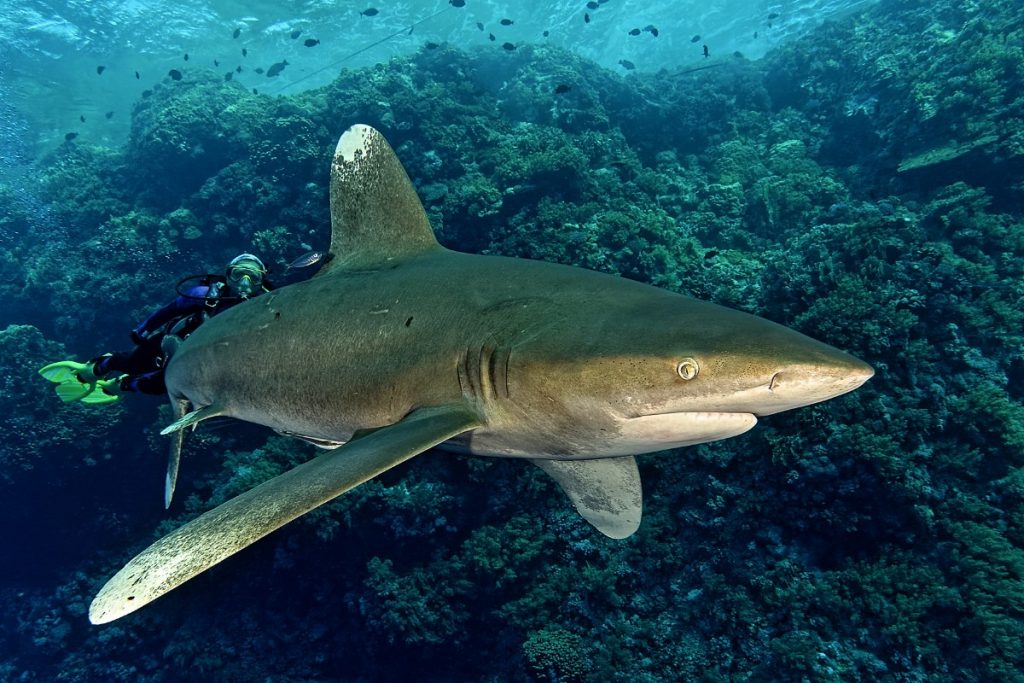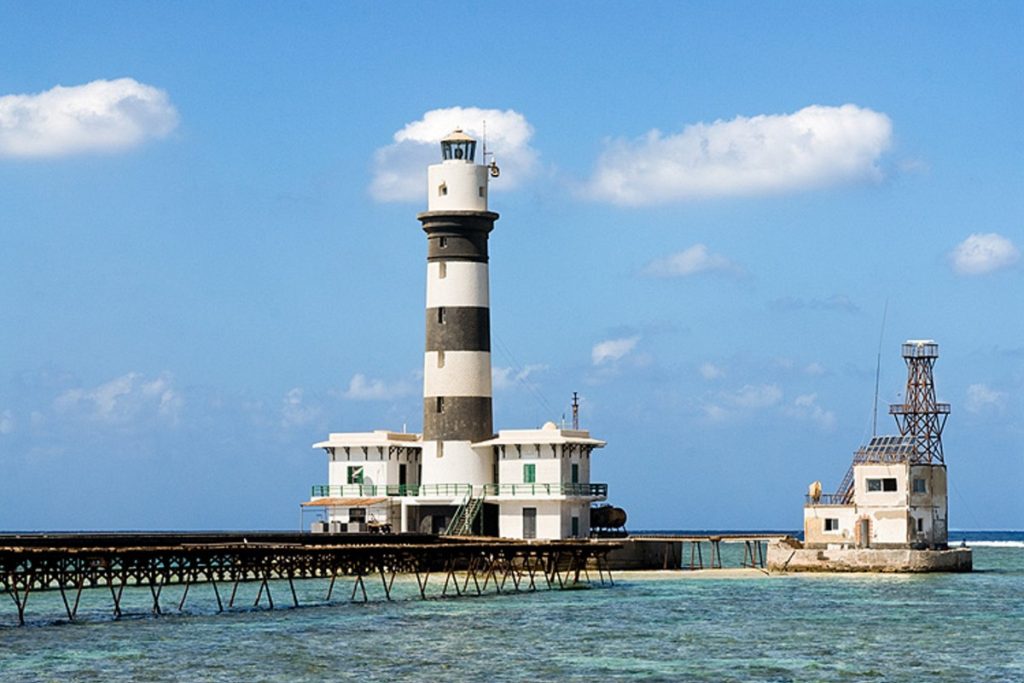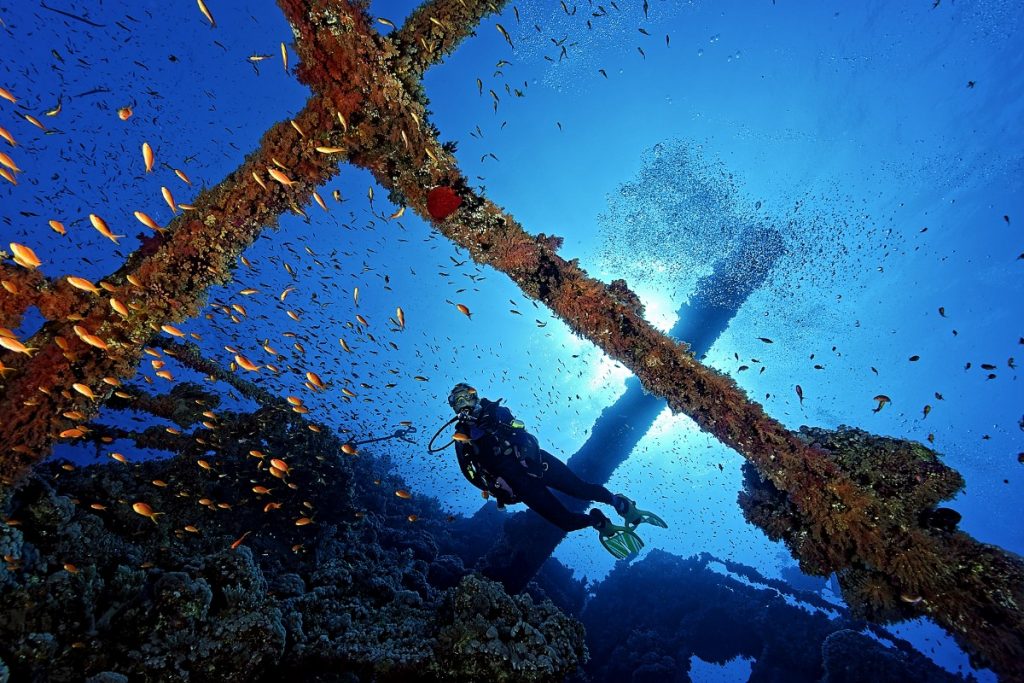Simply the Best
March to November | From Hurghada and Port Ghalib
Elphinstone, Brothers, Daedalus Reef
Itinerary Highlights
- Best Top 3 sites in the southern Red Sea: Big and Little Brothers, Daedalus Reef and Elphinstone
- Sheer walls draped in colourful soft corals and gorgonian forests.
- Wrecks of Aida II and Numidia richly covered with soft and hard corals.
- Strong currents nourish offshore reefs with a diverse range of marine life such as tuna, barracudas, jacks, groupers, Napoleon, snappers and reef sharks. Occasional hammerheads, silky and oceanic white tips, dolphins and mantas. Rare chance to spot threshers.
The Brother Islands are the pinnacles of two undersea mountains rising from the depths of the abyss and are located about 60 miles offshore. Part of the Marine Park Islands National Park, these islands offer stunning wall diving, with the walls covered in soft corals and forests of gorgonians, creating a kaleidoscope of ever-changing colours. They attract a diverse array of marine species and large pelagics. Large tuna, jacks and snappers cruise in the blue, accompanied by occasional hammerheads, silvertips, silky and oceanic white tip sharks and mantas. Even the rare thresher shark can be found here. Sightings of the grey reef shark are almost guaranteed on the North and South Plateaux of Small Brother.
For the wreck diver, the Aida II, an Egyptian supply vessel, and the Numidia, a cargo ship, lie on the walls of the Big Brother. Both are covered in a rich growth of soft and hard corals. Marine life includes a family of Napoleon wrasse and grey reef sharks.
Daedalus Reef, also part of the Marine Park, is a large, oval reef with a lighthouse and is the furthest offshore reef in the Egyptian Red Sea. Its deep walls and drop-offs offer some of the most spectacular diving to be found. Daedalus has mountainous, pristine, hard coral formations. There is also a strong chance of spotting schooling hammerheads and grey reef sharks.
Elphinstone is approximately 30km from Port Ghalib; Elphinstone reef is 300 metres long with sheer walls richly covered in colourful pink and red soft corals and elegant red gorgonians descending to around 40 metres. Other areas of the reef have near vertical cliffs, overhangs, small caves and drop offs of up to 100 metres. Elphinstone is known to experience some strong currents attracting many diverse species such as barracuda, angel fish, groupers, Napoleons, morays, reef sharks and great shoals of dogtooth tuna and jacks. Occasional sightings include dolphins, turtles, oceanic white tip and hammerhead sharks.
*Please be aware the dive sites and areas mentioned in our
itineraries are not guaranteed. They are subject to change based on weather
conditions and are at the discretion of our cruise director/captain. This is to
ensure we provide the best sightings and activities possible during your dive
experience while also prioritising your safety.
Dive Sites
Click dive site markers for detailed descriptions.
Dive sites & areas that we may visit are subject to weather conditions.
Daedalus
Daedalus Reef is the most distant offshore reef in the Egyptian Red Sea. It is approximately 52 nautical miles east of Marsa Alam and takes about 6 hours to get to.
The island is 450 meter long and 100 meter wide, it is marked by a lighthouse which forms the only break on the horizon for many miles in any direction. It's a huge round reef that provides an excellent opportunity for spotting big pelagics including manta rays and Thresher sharks. All around its steep walls you will see a a large variety of fish and coral. There's a good chance to see schooling hammerheads on the northern point. Strong currents possible and most of the dives on Daedalus Reef are drift dives along amazing deep walls covered by superb coral. In addition to the Sharks, you can also encounter various pelagic fishes such as the Giant Trevally or the Dogtooth Tuna. The Daedalus Reef is located within a Marine Park which combined with its remote location, really is one of the most pristine dive sites in the Red Sea.
The Daedalus Reef is can only be dived from a liveaboard and you need to be an experienced diver as the reef is in open sea.
Elphinstone
A world famous offshore reef, Elphinstone is the jewel in our crown. Sheer walls and sometimes currents at exhilarating speeds make this one for advanced divers only but it will be one you remember. Dive the east wall in the morning and the west in the afternoon to make the most of the sun, and light up the abundant soft corals. Anthias smother the walls and large gorgonian fans and black corals hide critters such as the infamous longnose hawkfish. Keep an eye out in the blue for resident schools of snapper, large barracuda and enormous Napoleon wrasse.
The north and south plateaus drop to over 40mt in depth but can be a place for very special encounters - manta rays, silvertip, tiger, grey reef and hammerhead sharks have all been seen here and cruising the shallows at the right time of year can be curious silky and oceanic whitetip sharks.
The Brothers
The Brother Islands are the pinnacles of two undersea mountains rising from the depths of the abyss and are located about 60 miles offshore. Part of the Marine Park Islands National Park, these islands offer stunning wall diving, with the walls being covered in soft corals and forests of gorgonians, creating a kaleidoscope of ever-changing colours.
- Big Brother -
The northerly of the two islands and has a small lighthouse. It has two wrecks laying on its walls. At the northern most tip of the island lays a large freighter named the Namibia, the other is the Aida II, an Egyptian supply vessel that struck at night. There is excellent wall diving all along the southern side of the reef with strong currents promoting the growth of a spectacular forest of soft corals. Frequent sightings of big pelagics and an astonishing variety of marine life.
- Little Brother -
This island is the smaller of the two as the name implies. At the northern end is a long tongue of reef that extends seaward and in good weather it is possible to drop in here and drift. The current runs from east to west and here sharks may be seen cruising. On the south east side is a superb fan coral forest but it is deep and starts at 35m, there are also plenty of caves, overhangs, black coral, and lots of pelagics including sharks, tuna, barracuda, turtles and schools of reef fish. As you round the southern corner the slope gives way to a vertical wall where you can catch a glimpse of a silver tip shark. In summer thresher sharks are seen here, in October grey reef sharks gather to mate and divers have also reported schooling hammerheads and groups of sailfish in this area. Before you know it your computer will tell you it time to head back to the boat having had the most spectacular diving.
Hurghada Airport
Hurghada Port
Marsa Alam Airport
Port Ghalib
Also Important
Check Dive & Depart Port
Once onboard there will be a safety briefing, crew introduction, complete and check dive paperwork, cabin allocation and boat orientation. Our boats moor in port on arrival day departing early next morning. The first dive is a check dive near port.
Return to Port
On the last diving day, 2 dives are available in the morning whilst observing the rule of no diving within 24 hours of reaching altitude. We return to port at approximately 1pm and moor here overnight. Evening-time pack up diving equipment, visit the marina and settle any outstanding bills ready to depart for the airport or hotel the following morning.
Itinerary Experience
Intermediate, 50 dives
We require you have 50 logged dives to join this trip and should be comfortable diving in drifts and currents as they can vary from gentle to strong. Many dives are below 18m therefore it is important you have a PADI Advanced Open Water qualification – or equivalent – to take part. The Cruise Director may ask divers to skip any dives not suitable for their level experience while booking a private guide may help maximise their enjoyment. Diving is from zodiacs to give precise entry and exit points.



